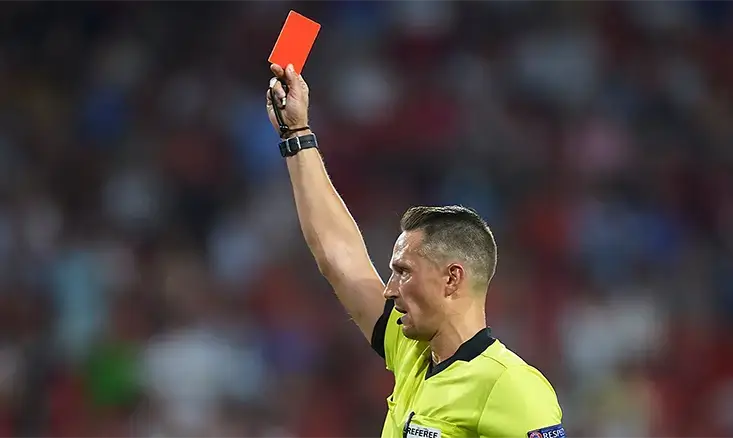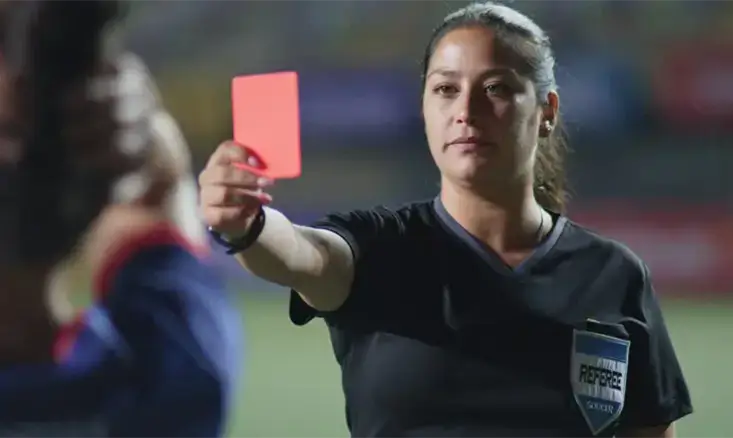CRFC BLOGS
LATEST BLOGS & NEWSLETTERS
Mastering Red Cards and Penalty Kicks in Youth Soccer
Youth soccer teaches young players essential life skills like teamwork, discipline, and respect. Understanding the game’s rules is crucial, especially regarding red cards and penalty kicks. These rules ensure fair play and safety but are often misunderstood by parents and new coaches.
In this detailed article, we’ll explore the role of red cards and penalty kicks in youth soccer, explain how they differ from professional games, and offer tips on making these moments valuable learning experiences.
What Are Red Cards?
Common Reasons for Red Cards
Red cards are issued for actions that go beyond standard fouls or mistakes. These offenses typically include:-
Violent Conduct
Physical aggression includes punching or kicking another player deliberately.
-
Serious Foul Play
Tackles or plays that endanger the safety of an opponent.
-
Use of Offensive Language
Insulting or abusive words toward referees, players, or spectators.
-
Deliberate Handball to Prevent a Goal
Using hands or arms to block a scoring opportunity.

Penalty Kicks: What You Need to Know
A penalty kick is awarded when a player commits a foul inside the penalty area that denies a goal-scoring opportunity. This rule allows the fouled team to take an unblocked shot at the goal, with only the goalkeeper defending.
When Do Penalty Kicks Happen?
Penalty kicks are tied closely to serious fouls and, in some cases, red cards. For example:
- If a defender trips an opponent about to score inside the penalty area, the referee might issue a red card and award a penalty kick.
- Similarly, deliberate handballs to block a goal can result in the same combination.
The penalty kick rule is designed to balance fairness. If a clear goal-scoring opportunity is unfairly stopped, the fouled team gets the chance they missed.

Why Are Red Cards and Penalty Kicks Important?
-
Promoting Fair Play
Red cards discourage players from engaging in reckless or harmful behavior. Knowing that serious misconduct could lead to dismissal, players are more likely to play responsibly.
-
Maintaining Safety
These rules protect young players from injuries by penalizing dangerous tackles and violent conduct.
-
Encouraging Sportsmanship
Youth soccer is about teaching respect for opponents, teammates, and referees. The consequences of fouls, such as penalty kicks, remind players to value fairness.
-
Balancing the Game
Penalty kicks restore balance when a team is unfairly denied a scoring opportunity, ensuring the game remains just for both sides.

The Role of Coaches and Referees
For Coaches
-
Teach Respect and Responsibility
Encourage players to respect the game’s rules, teammates, and opponents. Emphasize that severe fouls hurt the team and disrupt the game.
-
Practice Safe Play
Help players develop safe tackling and defensive techniques to avoid fouls that could lead to penalties or red cards.
-
Support Learning Over Winning
If one of your players receives a card, use it as an opportunity to teach them about sportsmanship rather than focusing solely on the consequences.
For Referees
-
Be Clear and Consistent
Young players need guidance. Clearly explain your decisions, especially when issuing cards or awarding penalty kicks.
-
Prioritize Education
Instead of simply penalizing players, help them understand what they did wrong and how they can avoid similar mistakes in the future.
-
Adapt to the Age Group
Referees should adjust their approach based on the players’ age and skill level. For instance, younger players benefit more from warnings than from red cards.
Conclusion
Red cards and penalty kicks are more than just soccer rules—they’re tools for teaching fairness, respect, and discipline. In youth soccer, which focuses on learning and enjoyment, these rules are adapted to create a safe and positive environment.
FAQs
What happens when a player receives a red card in youth soccer?
In youth soccer, receiving a red card means the player must leave the field immediately, and their team continues with one fewer player.
When is a penalty kick awarded in youth soccer?
A penalty kick is awarded when a player commits a foul inside the penalty area that denies a goal-scoring opportunity. Examples include tripping an opponent about to score or deliberately handling the ball to stop a goal.
How are red cards handled differently in youth soccer compared to professional games?
Youth soccer prioritizes player development and education. While professional games enforce strict rules, referees are advised to issue warnings or temporary “time-outs” instead of red cards in youth soccer.
How can coaches help players avoid red cards and penalties?
Coaches play a vital role in teaching players the rules and encouraging fair play. They can focus on:
- Teaching proper tackling techniques to avoid dangerous fouls.
- Emphasizing respect for opponents, referees, and teammates.
Why are red cards and penalty kicks essential in youth soccer?
Red cards and penalty kicks teach essential values beyond just discipline. They promote fair play, ensure player safety, and encourage sportsmanship. These rules also help players understand the consequences of their actions, preparing them for more competitive levels of soccer and life situations requiring accountability.

Did you find this useful?


